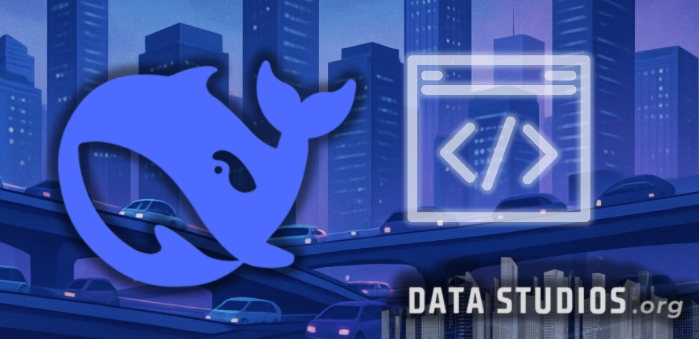DeepSeek Code Analysis: model performance, API structure, and developer workflows
- Graziano Stefanelli
- Oct 16
- 5 min read

DeepSeek has become a major tool in the ecosystem of code-oriented large language models, providing a combination of open accessibility and strong reasoning across programming tasks. Its 2025 lineup covers specialized models for static review, debugging, and repository-level analysis. Developers can use these models through the API or local deployment to review source files, detect vulnerabilities, generate tests, or refactor code safely.
·····
.....
How DeepSeek handles code analysis.
DeepSeek models process code as structured text rather than plain language. They use a tokenization strategy optimized for symbols, indentation, and syntax trees, making them capable of reading multi-file projects. In the most recent versions, the models interpret function definitions, class hierarchies, and call patterns while maintaining variable and type consistency across long contexts.
DeepSeek Coder V2 and DeepSeek R1 extend this ability further by combining code-specific pretraining with reasoning weights. The result is a family of models that can not only explain why a bug occurs but also suggest a logically consistent patch that compiles correctly. This combination positions DeepSeek as a high-value tool for integrated development pipelines.
·····
.....
Model lineup for programming and reasoning.
Model Name | Main Purpose | Context Capacity | Distinctive Feature |
DeepSeek Coder V2 (MoE) | General code analysis and completion | ≈128,000 tokens | Mixture-of-Experts design optimized for code reasoning |
DeepSeek Coder (V1) | Lightweight inference and completion | 16,000 tokens | Efficient for local or on-premise tools |
DeepSeek R1 | Deep reasoning for debugging and algorithmic inspection | Long-context (reported 100K+) | Multi-step logical tracing |
DeepSeek V3 / V3.2-Exp | Conversational assistant for editors | Short to medium context | Fast response and interactive review |
Each model covers a different balance of accuracy and latency. Coder V2 is the default for large repositories, R1 is suited to complex algorithmic reasoning, and V3 serves as a rapid companion within IDEs.
·····
.....
How the API supports code inspection.
DeepSeek provides a developer-oriented API with features specifically designed for software analysis. The function calling interface allows the model to trigger external tools such as linters, static analyzers, or test runners. Strict JSON output mode ensures that results are machine-readable, producing consistent fields for issue type, file path, and recommended fix.
Another distinctive feature is Fill-in-the-Middle (FIM) support. This allows the model to generate or modify code between two existing text anchors without rewriting the entire file. Developers can send only the surrounding context and receive the edited portion, reducing both token cost and merge conflicts.
Streaming responses are available for long diffs or large reviews, enabling continuous inspection during pipeline runs.
·····
.....
Example pipeline for automated review.
Collect changes. Export the modified files or diff from the version control system.
Submit analysis request. Send the code snippet to DeepSeek Coder V2 with the instruction to detect logic or security issues.
Return JSON results. Each issue appears as a structured object with file name, line number, severity, and description.
Trigger tool execution. The pipeline can call external formatters, tests, or patch validators using the returned schema.
Re-validate and merge. The updated code is re-checked automatically before integration.
This structure combines AI reasoning with deterministic verification, maintaining developer control while accelerating the diagnostic stage.
·····
.....
Context limits and performance optimization.
Although models like Coder V2 can handle large contexts, efficiency improves when code is divided into functional slices rather than full repositories. Splitting files by module or class reduces token load and keeps attention focused. Developers commonly use retrievers or AST mappers to fetch relevant functions dynamically before sending them to the model.
For real-time editor use, the V3 or V3.2-Exp versions provide lower latency. For multi-file audits or algorithmic reasoning, R1 or Coder V2 remain the preferred choices.
·····
.....
Typical output structure for static analysis.
DeepSeek supports strict schema enforcement to simplify downstream automation. The following pattern illustrates a standardized output format:
{
"issues": [
{
"file": "app/controllers/user.py",
"line": 84,
"rule": "SQLInjection",
"severity": "high",
"explanation": "Raw query built from user input.",
"suggested_fix": "Use parameterized query."
}
]
}
This schema can be consumed directly by CI systems or vulnerability dashboards, ensuring reproducibility across projects.
·····
.....
Using reasoning models for debugging and risk detection.
The DeepSeek R1 model introduces multi-step internal reasoning that mirrors human debugging logic. It follows a sequence of hypothesis, simulation, and verification steps to trace variable state and control flow. This approach is particularly effective for:
Algorithmic debugging where multiple conditions interact.
Complexity analysis of recursive functions.
Code audits in security-sensitive environments.
By simulating execution paths, R1 can identify not only the direct error but the chain of conditions leading to it. It can also explain why an optimization is safe or where a numerical approximation may lose precision.
·····
.....
Integration with developer environments.
Because DeepSeek’s API is compatible with the standard OpenAI format, existing frameworks like LangChain, LlamaIndex, and OpenDevin can integrate it without modification. Developers can use the same interface to send structured requests, stream token output, and manage tool calls.
In continuous integration pipelines, DeepSeek can act as a linting stage or advisory reviewer. The typical flow involves:
Model scan for security and logic issues.
Test suite execution to confirm reproducibility.
Optional patch generation via FIM.
Final confirmation and merge to the main branch.
This pattern brings AI reasoning directly into software governance without replacing existing safety gates.
·····
.....
Security and governance considerations.
While DeepSeek’s reasoning improves analysis quality, the same features demand careful use. The model should never directly commit generated code to production without verification. Recommended safeguards include:
Running all patches in sandboxed environments.
Enforcing unit and integration tests before merge.
Using JSON validation to prevent injection of arbitrary content.
Restricting model access to codebases under clear confidentiality policies.
For enterprises requiring internal deployment, DeepSeek’s open-model variants provide an option for private hosting, aligning with stricter compliance or data retention needs.
·····
.....
Comparison of DeepSeek models for developers.
Scenario | Recommended Model | Primary Strength |
Reviewing small patches or PRs | DeepSeek Coder V2 | Accurate syntax and logic detection |
Debugging complex algorithmic behavior | DeepSeek R1 | Multi-step reasoning and causal tracing |
Real-time assistance in IDE | DeepSeek V3 / V3.2-Exp | High speed and low latency |
Refactoring or FIM tasks | DeepSeek Coder V2 (FIM mode) | Efficient targeted code edits |
Repository-wide static analysis | Coder V2 + retrieval pipeline | Large context and JSON output stability |
This table helps teams map each model to its most effective application.
·····
.....
Practical recommendations for implementation.
Start with Coder V2 for general inspection, switching to R1 for deeper reasoning cases.
Enforce structured outputs to integrate easily with testing and patching workflows.
Chunk long repositories to maintain efficiency.
Pair DeepSeek with existing CI checks for consistent verification.
Log reasoning outputs to track model explanations and compare future runs.
By treating DeepSeek as a controlled analytical component rather than a code generator, developers can extract reliable insights while maintaining governance over production systems.
·····
.....
Summary of DeepSeek code analysis in late 2025 and beyond
DeepSeek’s models combine reasoning power, structured outputs, and flexible deployment for comprehensive code understanding. With the introduction of Coder V2 and R1, the system handles both everyday static review and advanced algorithmic debugging. The API’s compatibility, JSON schemas, and FIM support make it straightforward to integrate into existing CI pipelines.
For organizations building automated auditing or continuous quality checks, DeepSeek provides a scalable, transparent foundation that balances speed, interpretability, and governance — positioning it as one of the strongest open alternatives for code intelligence in 2025.
.....
FOLLOW US FOR MORE.
DATA STUDIOS
.....[datastudios.org]




